




















The beginning of a new year, with the activities and optimism of planning for the future, is a reflective time to look back with gratitude on the accomplishments we have achieved. Pointing to just a handful of 2022’s accomplishments, we see a team that protected special district revenue streams, supported infrastructure public works projects and services needed in large and small communities, improved oversight and accountability, and enhanced open and public meetings to allow special districts to perform their essential services efficiently and when needed.
I am particularly grateful for the people that CSDA is honored to work with. Our support of special districts could not be accomplished without:
• Great partners – With the launch of California CLASS this year, we bring an investment tool tailor made for special districts. Our endorsed and Alliance partners consistently provide efficiency enhancements, savings opportunities, and revenue streams to our membership base.
RYAN CLAUSNITZER, CSDM, PRESIDENT, Alameda County Mosquito Abatement District
ELAINE MAGNER, VICE PRESIDENT, Pleasant Valley Recreation & Park District
ARLENE SCHAFER, SECRETARY, Costa Mesa Sanitary District
JERRY L. GILMORE, TREASURER, Truckee Sanitary District
GREG ORSINI, PAST PRESIDENT, McKinleyville Community Services District
DON BARTZ, CSDM, Phelan Pinon Hills Community Services District
STANLEY CALDWELL, Mt. View Sanitary District
CHAD DAVISSON,CSDM, Ironhouse Sanitary District
VINCENT FERRANTE, Moss Landing Harbor District
PETER KAMPA, CSDM, Groveland Community Services District

JO MACKENZIE, Vista Irrigation District
NOELLE MATTOCK, El Dorado Hills Community Services District
PATRICK OSTLY, North of River Sanitary District #1
STEVE PEREZ, CSDM, Rosamond Community Services District
LORENZO RIOS, Clovis Veterans Memorial District
FRED RYNESS, Burney Water District
KIMBERLEE SENEY, Gold Mountain Community Services District
• Great Board – The development of the 2023-2025 CSDA Strategic Plan shows thoughtful planning that is mission driven, brought together by a cohesive board focused on strategic policy making, working as a team with our staff for optimal execution of our goals.
• Great staff – Our team has accomplished so much, as a unit they remain focused on serving and representing CSDA members. The full list of accomplishments is too vast for the space I have allocated here, but I am proud of their work and excited to see what we can accomplish in 2023. For the full list, please see the 2022 Year End Report and Highlights on our website at: bit.ly/2022_Highlights
• Great members – I’m thankful for our amazing members providing essential services across California every day. Special districts are truly at the forefront of our communities, and it is inspiring to see the many creative ways they find to show up every day to serve their constituents.
I am grateful for the privilege to lead CSDA’s efforts on behalf of California’s special districts. I look forward to the many exciting things to come in 2023.
NEIL MCCORMICK, Chief Executive Officer
MEGAN HEMMING, Professional Development Director
KYLE PACKHAM, Advocacy & Public Affairs Director
CASSANDRA STRAWN, Member Services Director
RICK WOOD, Finance & Administration Director
AARON AVERY, Senior Legislative Representative
EMILY CHA, Database & Online Communities Specialist
MARCUS DETWILER, Associate Legislative Representative
BRENT FARRAR, Graphic Design/Video Specialist
AUBREY GOHL, Member Services Representative
VANESSA GONZALES, Communications Specialist
COLLEEN HALEY, Public Affairs Field Coordinator
HEIDI HANNAMAN, Legislative Representative
LILIA M. HERNANDEZ, Legislative Assistant
MUSTAFA HESSABI, Deputy General Counsel
CHARLOTTE HOLIFIELD, Public Affairs Field Coordinator
MICHAEL MEYER, Member Services Specialist
CHRIS NORDEN, Public Affairs Field Coordinator
CHRIS PALMER, Senior Public Affairs Field Coordinator
AMBER PHELEN, Executive Assistant
RACHAEL POPPINO, Professional Development Assistant
COLE R. QUERRY, Legislative Analyst
JENNIFER SMITH, Professional Development Coordinator
ERIC SPENCER, Member Services Specialist
SUSAN STAUTS, Member Services Representative
DANE WADLÉ, Senior Public Affairs Field Coordinator
JAMES WILFONG, Design & Websites Manager
KRISTIN WITHROW, Communications Specialist





SAVE-THE-DATES!
Register at csda.net!
Special District Leadership Academy (South)
February 26 - March 1, 2023
La Quinta (Palm Springs area)
SDRMA Spring Education Day
March 22, 2023
(optional reception on March 21)
Sacramento
Special District Legislative Days
May 16-17, 2023
Sacramento
General Manager Leadership Summit
June 25-27, 2023
Olympic Valley (Lake Tahoe area)
CSDA Annual Conference & Exhibitor Showcase
August 28-31, 2023
Monterey
Special District Leadership Academy (North)
October 22 - 25, 2023
Santa Rosa
Board Secretary/Clerk Conference
November 6-8, 2023
Seaside (Monterey area)

The SDRMA Spring Education Day provides risk management training relating to Property/Liability and Workers’ Compensation at no cost. Keynote speaker Dean Coughenour will present "Building a Culture of Risk Management." In addition, the SDRMA Board of Directors will conduct their Annual Membership Meeting that will include current insurance market updates and important upcoming renewal information. SDRMA members that attend the Spring Education Day are eligible to earn Credit Incentive Points (CIPs) to reduce their annual contribution for both the Property/Liability and Workers’ Compensation Programs.
Welcome Reception
Tuesday, March 21, 2023
5:00 – 6:00 p.m. Drinks & Appetizers provided
SDRMA Spring Education Day Wednesday, March 22, 2023
Three registration options to choose from:
• Keynote & Breakout Sessions
• Keynote & Governance Foundations*
• Keynote & Safety Specialist Certificate Program
*Additional fee to CSDA members for Governance Foundations workshop
In the Spring of 2021, CSDA convened a feedback group of more than two-dozen special district officials to confirm how special districts were accessing and using Nextdoor and to better understand what interest special districts had in using the platform going forward. CSDA conveyed this feedback to Nextdoor and helped answer questions about the services communities receive from special districts and the manner in which they are governed.
Nextdoor, the popular neighborhood-based social media network, has announced a change to its guidelines that will allow special districts to establish a formal Nextdoor for Public Agencies page on the platform, fostering enhanced community and public relations.

The welcome change comes after extensive efforts with special district stakeholders to promote awareness of special districts as a local government in efforts to gain easier access to the platform’s tools for community communications. CSDA played a significant role working with Nextdoor to help in its policy development related to special districts. This multi-year effort began after receiving a wide range of inquiries from CSDA members, as well as anecdotes at CSDA conferences. Special district leaders clearly saw value in gaining equitable access with cities and counties to the platform to ensure communities served by special districts would receive the same access to information and resources they need.
More than 5,000 public agencies currently use Nextdoor. Many utilize the tool to share information with residents in specific neighborhoods. The tool may be effective in cases of community events, emergency alerts, and other messages targeting audiences based on geography. According to Nextdoor, the platform reaches 98 percent of the nation’s communities and is used by nearly a third of households in the United States.
Now, special districts may apply to create a free Nextdoor for Public Agencies page to better communicate with their communities. In order to do so, districts must certify that:
• They are a permanent government agency with a full-time staff.
• They do not represent a committee, board, program, or project.
• They do not represent an elected official.
• They have a discrete jurisdictional boundary that has been approved by their state’s governing body.
• They can provide a GIS map file of their boundary upon request.
• They can apply using a personalized work email (i.e., firstname.lastname@agency.com) and can provide proof of employment upon request.
Special districts that do not have a GIS map file of their boundary may contact CSDA endorsed business affiliate California CAD Solutions for CSDA member-preferred pricing on developing the necessary GIS file.
CSDA would like to thank Nextdoor for taking time to meet, discuss, and consider the perspectives shared by CSDA and our membership.
For more information or to sign up for Nextdoor for Public Agencies, go to nextdoor.com/agency. Please reach out to agencysupport@nextdoor.com with any questions.
I was wondering if anyone knew if there are any specific requirements or information that we need to be putting in the newsletter and are they to be monthly? I’m new to my district and in the past the district has put community complaints, news in the community, upcoming events, and seasonal suggestions. I looked online and can’t seem to find anything that suggests anything specific. Any ideas or directions on the requirements that we, as a water/wastewater service district, are to follow when making the newsletters?
Gustav Larsson Board Member, Bay Area Water Supply and Conservation Agency
Be careful about including board member names or photos in a hard-copy newsletter or brochure. A roster of all board members might be okay if all names are in the same font, size, color, location, etc., but an interview with a board member is probably not and could be considered a prohibited mass mailing sent at public expense. See Government Code Sections 89001-89003. These rules seem to apply only to “tangible” (printed) newsletters but not emails, web postings, text messages, etc. I am not a lawyer, so please check with your attorney for the latest guidance.
The FPPC has more information here: https://fppc.ca.gov/learn/ public-officials-and-employees-rules-/communications-sentusing-public-funds/campaign-related-communications.html
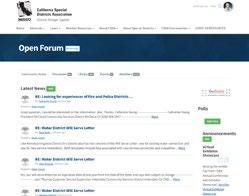
 Teuscher
Teuscher
Our newsletters always consist of what the board ruled on at the board meeting, anything significant going on in the district (Hydrant Flushing, main line repair, tank cleaning, etc.), and then the fluff like events going on in the community, office closures for holidays, next board meeting announcement, average water used for the district, etc.
https://www.csda.net/communities-home

Engage with your peers and ask questions on CSDA’s Open Forum community!
This principle used to be clear – paid administrative leave was outside the scope of adverse employment action. This was based on court holdings that an employee suffers no substantial or material change in terms and conditions of employment while on paid administrative leave. For years, courts held that an employee who is put on paid administrative leave cannot prove he or she suffered an adverse employment action to give rise to a viable discrimination or retaliation claim. However, what once was clear, is no more.
First, in 2013, the Ninth Circuit put into question the principle that paid administrative leave does not constitute a type of adverse employment action. In Dahlia v. Rodriguez (9th Cir. 2013) 735 F.3d 1060, the Ninth Circuit held paid administrative leave could constitute an adverse employment action when considering the totality of the circumstances. Second, on November 15, 2017, the Fourth District Court of Appeal issued a decision in Whitehall v. County of San Bernardino (2017) 17 Cal.App.5th 352 holding that the imposition of an administrative leave may constitute an adverse employment action. Since 2017, there has been at least one California case that has found that placement on paid administrative leave may constitute an adverse employment action depending on the specific facts presented.1
The decisions in Whitehall and Dahlia have forced California employers to rethink when paid administrative leave may qualify as an adverse employment action and to consider the risk involved with placing an employee on paid administrative leave.

The purpose of paid administrative leave is to temporarily remove an employee from the workplace to address a particular situation. For example, if an employee engages in
or threatens violence in the workplace, an employer can and should remove the employee from the workplace pending an investigation into the alleged misconduct. Paid administrative leave has also been used by employers when, on balance, they feel it is better that the subject of an investigation is not in the workplace while the investigation is pending. Use of paid administrative leave has not been limited to investigations of discrimination, harassment or retaliation. It has had widespread use for many different types of alleged misconduct.
During paid administrative leave, the employee is typically relieved of all duties and responsibilities of his/her position. The employee remains employed by the agency and continues to receive full pay and benefits. During the leave, an agency may prohibit the employee from entering agency-owned property or facilities and can order the employee to surrender all agency-provided property (office keys, IDs, credit cards, computers, etc.). The agency can also require the employee to remain available during regular business hours to answer any and all work-related inquiries.
The California Supreme Court has coined “adverse employment action” as a “term of art.” It is generally used as a shorthand description of the kind of adverse treatment imposed upon an employee to support a cause of action under a discrimination or retaliation statute.
Employees in California may bring claims of discrimination and retaliation pursuant to the Fair Employment and Housing Act (“FEHA”). Under the FEHA, an adverse employment action must be reasonably likely to impair an employee’s job performance or prospects for advances.2 It does not include minor or trivial actions that do no more than anger or upset an employee. While an adverse employment action may include more than just “ultimate” employment acts, such as
failure to hire, termination, demotion, or failure to promote, it nevertheless requires “a substantial adverse change in the terms and conditions” of employment.3 The reason why an employee must provide a substantial adverse job effect is to guard the employer from judicial micromanagement of business practices and frivolous lawsuits over insignificant slights. This brings up the question, is paid administrative leave a substantial and adverse change in employment?
There is a split in federal circuit authority about whether paid administrative leave constitutes adverse or punitive action. Some circuits have a split in authority even amongst district courts within the circuit. This is because the determination of whether paid administrative leave constitutes an adverse employment action requires the courts to closely scrutinize the exact facts in the case. There is no one-sizefits all answer and courts sometimes have to draw lines that are not always clear in deciding whether there has been a substantial or material change in the terms and conditions of employment. The Ninth Circuit, which is the circuit whose decisions govern employers in California, has found paid administrative leave can be an adverse employment action in the Dahlia case. There are cases from the Second, Third, Fifth,
Sixth, Seventh, Eighth, and Tenth Circuits that have held that placing an employee on paid administrative leave, without more, is not an adverse employment action.4 There have also been other cases from the Fifth and Sixth Circuits that have found that paid administrative leave cannot be flatly ruled out as an adverse employment action.5
1 Taswell v. Regents of University of California (2018) 23 Cal.App.5th 343, 365 (placement on paid leave pending investigation and, that same day, informed contract would not be renewed constitute adverse employment actions).

2 Yanowitz v. L’Oreal USA, Inc. (2005) 36 Cal.4th 1028, 1054-1055.

3 Akers v. County of San Diego (2002) 95 Cal.App.4th 1441, 1455.
4 See Joseph v. Leavitt (2d Cir. 2006) 465 F.3d 87; Jones v. Southeastern Pennsylvania Transportation Authority (3rd Cir. 2015) 796 F.3d 323; Breaux v. City of Garland (5th Cir. 2000) 205 F.3d 150; Stewart v. Miss. Transp. Comm’n (5th Cir. 2009) 586 F.3d 321, 332; Peltier v. United States (6th Cir. 2004) 388 F.3d 984; Nicols v. Southern Illinois University-Edwardsville (7th Cir. 2007) 510 F.3d 772; Singletary v. Missouri Dep’t of Corr. (8th Cir. 2005) 423 F.3d 886; Benavides v. City of Oklahoma City (10th Cir. 2013) 508 Fed.Appx. 720; Lincoln v. Maketa (10th Cir. 2018) 880 F.3d 533, 542.
5 McCoy v. City of Shreveport (5th Cir. 2007) 492 F.3d 551, 561 (it is a close question whether paid administrative leave constituted an adverse employment action); Michael v. Caterpillar Fin. Servs. (6th Cir. 2007) 496 F.3d 584, 596 (placement on paid administrative leave for four days, coupled with placement on a 90–day performance plan, was an adverse employment action).
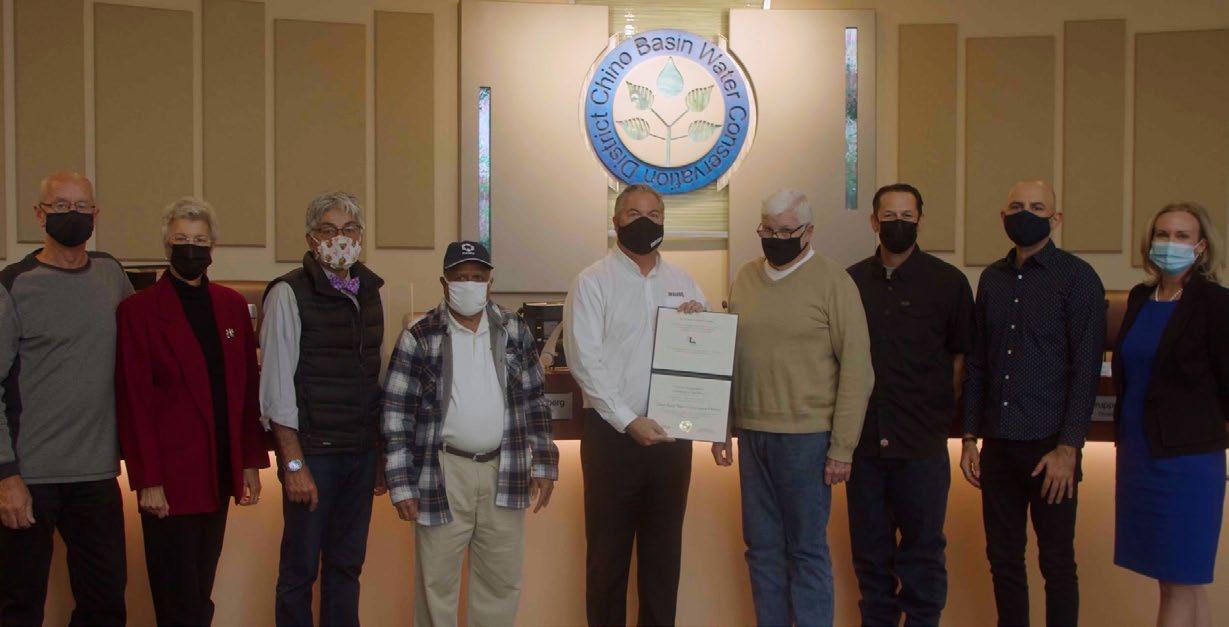
The Special District Leadership Foundation (SDLF) recognizes the Chino Basin Water Conservation District as one of the ten 2021 SDLF Transparency Challenge winners – the final one that we will showcase for the year. Chino Basin Water Conservation District’s Toyasha Sebbag shares insight about the process and the benefits of this transparency recognition for their district.
Share your experience completing the Transparency Challenge.
Completing the SDLF Transparency Challenge was an easy and straightforward process. As an organization, it allowed us to evaluate many documents that we have available at our facility and make them easily accessible to the public via our website.
Why was completing the challenge important to your district?
The Chino Basin Water Conservation District (CBWCD) was formed in 1949 to help protect and preserve the Chino Groundwater Basin for the San Bernardino County communities that rely on it as a water source. Our formal service area includes all or part of the cities of Chino, Chino Hills, Montclair, Ontario, Fontana, Rancho Cucamonga, and Upland.
We provide services to increase water supply, by recharging the Chino Groundwater Basin through the operation and maintenance of large-scale percolation basins. These properties capture stormwater runoff that would otherwise be lost and allow it to be stored underground for later use by area water providers. In collaboration with other local agencies, we also manage these sites to allow for additional groundwater recharge through the percolation of recycled and imported water.
The Waterwise Community Center is the public face of the district, offering our community no-cost resources and inspiration for water conservation and we focus on reducing water demand through community and conservation programs. We provide free resources, workshops, and programs to inspire and empower community members of all ages to be water stewards.
The Waterwise Community Center, located in Montclair, is free and open to the public and offers a living example of how beautiful conservation can be.
Taking on the Special District Leadership Foundation Transparency Challenge is important to our Board of Directors who unanimously voted for the district to participate because running a transparent government organization contributes to the awareness of citizens and fellow public entities and the commitment to providing innovation of government services supported by taxpayers.
It is now more important than ever for local governments (including special districts) to be open and accessible to the public. The Special District Leadership Foundation’s Transparency Challenge showcases the many steps districts take to show they are available and transparent to their constituents and customers.
Learn more at https://www.sdlf.org/home.

Now that you have earned your SDLF Transparency Certificate, how will you use the recognition to highlight your district’s accomplishment to your customers, constituents, and/or other stakeholders?
Government transparency is a government’s obligation to be open, accountable, and honest with its constituents. This honesty involves being open about how we are conducting business and using constituents’ tax dollars to improve the area we govern. This recognition will highlight our district’s commitment to communicating how and why decisions are made to benefit our service area. It will also serve as an open door to customers, constituents, and stakeholders of our board’s commitment to responsible governance.
In 1999, the Special District Leadership Foundation (SDLF), a 501(c)(3) organization, was formed to provide recognition and certification opportunities to special district officials and employees to enhance service to the public. It is dedicated to excellence in local government. The mission of SDLF is to promote and recognize excellence in the governance and management of special districts. The vision of SDLF is that every special district in California has well trained, knowledgeable decision-makers and engages the public through a transparent process. To date, SDLF has designed and implemented the following programs: Certified Special District Manager (CSDM); Certificate in Special District Governance; District of Distinction Accreditation; and District Transparency Certificate of Excellence. To learn more, visit sdlf.org

past 26 years,
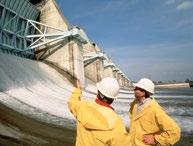

Pleasant Valley Recreation and Park District (PVRPD) in Camarillo has experienced the upside of services from CSDA endorsed affiliate Utility Cost Management, LLC (UCM). PVRPD Director Elaine Magner said, “we have them come back to assess our bills about every three or four years. They’ve found incredible savings for us.”

UCM has helped businesses realize utility bill savings since 1991 by providing in-depth tariff and regulatory reviews through their system of informed utility data and regulation assessment. CSDA members have access to their Utility Bill Analysis Service with no out-of-pocket expenses and the UCM staff handles all communications with the utility provider. UCM is only paid if, and after, your district receives savings and/or refunds as a result of their work.
At PVRPD, the results of UCM’s analysis helped inform district operations in such a way that “we changed the entire lighting of our sports fields based on what they found,” said Magner.
For more information about UCM’s service and all the value-added benefits of membership, visit our website at csda.net/join/value-benefits.
The Contra Costa Water District (CCWD) Board of Directors (Board) has selected assistant general manager Rachel Murphy to become the new general manager (GM) following the retirement of Steve Welch. Murphy has over 26 years of experience and will become the first woman to lead CCWD in the GM role.

“The Board unanimously agreed that Rachel was the top candidate based on her extensive knowledge, professional experience and understanding of CCWD’s current and future needs to serve our customers,” said Board President Ernesto A. Avila. “CCWD has a talented workforce and Rachel is the right person to lead this team in developing innovative solutions and making smart investments for the future.”
Edward J. (E.J.) Caldwell has been promoted to the role of assistant general manager at West Basin Municipal Water District in Carson, CA. Caldwell was selected through a competitive internal recruitment process, and will be reporting directly to general manager, Gregory Reed.
Caldwell is a long tenured employee with West Basin for the past 16 years, and has held titles of interim general manager, manager of water policy and resource development, and government affairs program manager.

The Cucamonga Valley Water District (CVWD/District) is pleased to announce it is the recipient of the California Association of Public Information Officials (CAPIO) 2022 Excellence in Public Information & Communication (EPIC) Award for its CVWD Through the Decades podcast. CVWD, along with over 60 finalists amongst five award categories, received one of two distinctive awards: The CAPIO EPIC Award (top honors), or an Award of Distinction during the CAPIO Conference in San Diego.
“We are excited to earn top honors for our historical podcast series which was solely produced in-house by our talented Government & Public Affairs Team,” commented President Randall James Reed. “It makes me proud that CVWD is one of the first water agencies in southern California to develop and execute a successful podcast, inspiring many other agencies to embark on their own podcast journey.”
The Government Finance Officers Association of the United States and Canada (GFOA) has awarded the Certificate of Achievement for Excellence in Financial Reporting to the Costa Mesa Sanitary District (CMSD) for its Annual Comprehensive Financial Report (ACFR) for the fiscal year ended June 30, 2021. The report has been judged by an impartial panel to meet the
high standards of the program, which includes demonstrating a constructive “spirit of full disclosure” to clearly communicate its financial story and motivate potential users and user groups to read the report.
Desert Health Care District’s CEO Dr. Conrado Bárzaga has won CEO of the Year and Leticia De Lara has won Trustee of the Year from the Association of California Healthcare Districts.

The Mission Springs Water District Board of Directors voted unanimously to appoint local resident and businessman Robert Griffith to fill the Division 2 Board vacancy. Griffith, who resides in Division 2 and has a history of leadership and giving back to the community, previously served as a Desert Hot Springs Councilmember and Mayor Pro Tem. He also has held positions on the Desert Hot Springs Planning Commission and is currently the president of the DHS Historical Society and the DHS Hotelier’s Association.
“Robert’s knowledge and dedication to the DHS community are unparalleled,” said Board President Russ Martin. “I’m confident in his ability to represent our customers and am honored to serve alongside him on the MSWD Board.”
West Valley Water District (WVWD) earned the Government Finance Officers Association’s (GFOA) Certificate of Achievement for Excellence in Financial
Reporting for the fiscal year ending June 30, 2021.
“Receiving this award for the eleventh consecutive year is a testament to the continued commitment of both the board and agency staff to provide greater accountability and transparency to our ratepayers,” said WVWD Board President Channing Hawkins. “On behalf of the entire board, we applaud the finance department for their relentless pursuit of excellence.”
In addition to earning the prestigious financial reporting award, the GFOA recognized WVWD Director of Finance Jose Velasquez for his primary role in the preparation and finalization of the
ACFR and earned the GFOA’s Award of Financial Reporting Achievement.
Jessica Puckett, administrative analyst with Pleasant Valley Recreation & Park District, has earned her Certified Park and Recreation

Executive certificate from the National Recreation and Park Association. The CPRE establishes a national standard for managerial, administrative, and executive parks and recreation professionals. This mastery-level credential focuses on the practical knowledge and current real-world skills
necessary in today’s changing park and recreation environment.
Congratulations to Adán Ortega for his election as new chairman of the Metropolitan Water District of Southern California board. He is the first Latino chairman to be elected to the post and will serve a two-year term starting January 1. “I pledge to my colleagues on the board, Metropolitan staff and our member agencies to work relentlessly to meet our water supply and environmental stewardship commitments to the cities and communities we serve throughout SoCal,” said Chair-elect Ortega, who represents the City of San Fernando on the board.
on page 16...
Cosumnes Community Services District’s ribbon-cutting ceremony at the Elk Grove Nature Park marked the opening of Elk Grove’s 102nd park. Located behind the Cosumnes CSD Administration Building, the Elk Grove Nature Park contains over a quarter of a mile of new walkways designed to contribute to the well-being of the community. Thanks to all who joined in on the celebration and participated in the community collaboration. This park was made possible by the support of: SMUD’s Shine Award Program, CivicWell, NRPA, and Urban Rain Design. Thank You!
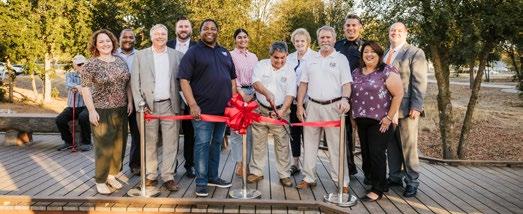
Lompoc Mayor Jenelle Osborne has been appointed 2022-2023 Vice Chair of the Northern California Power Agency (NCPA) by the NCPA Board of Directors. NCPA is a joint powers agency representing 16 publicly-owned electric utilities, including Lompoc. The agency owns and operates 800 megawatts of power generation on behalf of member utilities that collectively serve 700,000 electricity customers across Northern and Central California.


Osborne said, “As a founding member of NCPA, the City of Lompoc has an advantage over its neighboring communities in our ability to deliver reliable electricity at reasonable rates. Being a part of the NCPA executive and legislative affairs teams, I am able to advocate not only for Lompoc, but for all our public power partners at the local, state and federal level. I am honored to represent Lompoc and NCPA.”
The Apple Valley Fire Protection District is excited to announce their unanimous decision to appoint Interim Fire Chief Peratt to the position of Apple Valley Fire Protection District Fire Chief. Chief Peratt is a long-time resident of Apple Valley. He is a graduate of Apple Valley Middle School and Apple Valley High School. He started in the fire service in 1997 with the Apple Valley Fire Protection District as a volunteer fire inspector. He worked at several other agencies at the beginning of his career including San Bernardino County Fire, Fort Irwin Fire and the City of Victorville Fire. He returned to Apple Valley Fire in 2008 and has served in the ranks of captain, battalion chief and now fire chief. Congratulations, Chief!

Redlands, CA based Inland Empire Resource Conservation District was recognized in September by the California State University, San Bernardino with their Outstanding Community Partner Award. The IERCD was chosen as a 2022 recipient due to ongoing collaboration in many areas, including support of project-based learning, faculty-student research, and field experience for student interns. This work is part of IERCD’s ongoing facilitation of conservation-based education and outreach in the community, including bilingual K-12 classroom programs, community workshops, field trips, and education events within their nearly 1,300 square mile service area.
Monterey Peninsula Water Management District and Marina Coast Water District Board Members along with design firm Kennedy Jenks and district staff (Assistant General Manager, Principal Engineer, Chief Plant Operator, & Director of External Affairs) were on hand to accept the ASCE OPAL award for their Pure Water Monterey project. The award honors outstanding civil engineering leaders whose lifetime accomplishments contribute to the create of thriving businesses and the local economies of the communities they serve.
The Pacific northwest is home to magnificent beaches, towering redwoods bordered by the Pacific ocean, and a coastal range of mountains. The McKinleyville Community Services District is the unincorporated community’s primary services structure, along with Humboldt County offices. Established on a bluff overlooking the Pacific in 1970, the independent special district has been the provider of water, streetlights, parks and recreation and the community center for the nearly 17,000 residents in the area. In addition, the district maintains open spaces and operates the state-ofthe-art wastewater treatment facility which was upgraded in 2017.
California’s push toward renewable, non-carbon energy use has spurred an increase in funding options and opportunities for special districts across the state. In 2019, McKinleyville Community Services District found themselves on the receiving end of a $2.5 million grant and a $2.5 million low interest loan from the State Water Resources Control Board’s Energy Efficiency Grant Program.
“The only way we were able to make this plan work was through this grant and low interest loan program,” said Pat Kaspari, the district’s general manager. “Unfortunately, that grant program is not currently active, but we are a good case for the State Water Resources Control Board to continue that Energy Efficiency program because we would not have been able to implement this project without those funds.”
With an eye toward fiscal responsibility, cost management and the potential for PG&E Public Safety Power Shutoff (PSPS) events, the district took the opportunity to increase self-sufficiency while reducing the risks associated with a loss of power to its wastewater treatment facility. They selected

Ameresco, an engineering firm from Massachusetts, to provide the facility with a solar microgrid system that would enable them to maintain operations during PSPS events and reduce their electricity costs of operation.
The system includes a 580 kW solar array with a 500-kW battery storage system that can produce 1,340-kWh in a single discharge, coupled with an existing diesel generator. An average estimated savings of $10,000 per month is expected from the microgrid.
For additional self-sufficiency and savings, the district worked with Tesla to install a battery energy storage system at one of their water pumping stations and a wastewater lift station. Tesla waived the installation fees for the district and PG&E provided grant money to offset additional costs. The battery systems will allow the district to discontinue use of diesel generators in a power interruption and allow critical water and wastewater pumping to continue uninterrupted for more than a day. In addition, the batteries can be charged during lower cost, off-peak hours to then reduce power intake during higher-cost peak usage hours, thereby saving the district electricity costs of around $30,000 annually.
Changes from traditional carbon-based fuel usage with generator backups to renewable energy sources that allow districts to use flexible energy in peak usage, or maintain uninterrupted operations during power losses, are becoming more widely instituted throughout the state. CSDA recognizes the pioneering spirit of independent special districts who are leveraging opportunities to upgrade infrastructure and find cost savings in non-traditional ways. If your district has a renewable energy project coming online in 2023 that you’d like to share with us, please contact us at membership@csda.net
This year’s annual Capitol Staff Tour, co-sponsored by the Association of California Healthcare Districts and the California Municipal Utilities Association, visited nine special districts in Monterey and Santa Cruz Counties. The ambitious tour was well attended, with 27 State Capitol staff participating over the course of two days on September 12-13, 2022.
The educational tour offered attendees a unique opportunity to directly interact with California’s local service specialists and to gain a deeper understanding of the public policy issues affecting the millions of residents served by California’s 2,000 special district local government agencies.

This year, participants experienced a boat tour highlighting the gateway to the Monterey Bay National Marine Sanctuary, got an inside look at seawater intrusion infrastructure, got hands-on fieldwork and sampled fried artichokes, viewed the home of the Monterey Bay Aquarium Research Institute by water and were briefed on the newest healthcare district specifically formed to continue critical hospital services in the area.

Many thanks to the districts that hosted this tour group:
• Castroville Cemetery District
• Castroville Community Services District
• Moss Landing Harbor District

• North County Fire Protection District
• North County Recreation and Park District
• Resource Conservation District of Monterey County
• Resource Conservation District of Santa Cruz County

• Santa Cruz Port District
• Soquel Creek Water District
The purpose of the Special District Tours is to demonstrate how special districts provide essential services to their communities across the state and to connect local districts with their federal, state, and regional partners.

Interested in participating in the 2023 tours?
Email: advocacy@csda.net

On September 21, CSDA hosted a tour for federal, state, and local officials featuring three special districts in San Joaquin County. The hosts included: Stockton Port District, San Joaquin County Mosquito and Vector Control District, and the South San Joaquin Irrigation District. Attendees included representatives from federal and state legislative offices learning about the critical function of the port for commerce, how a mosquito and vector control district monitors threats and helps maintain public health, and the water infrastructure keeping food production in the central valley while instituting technology for increased water efficiency and conservation.
Candidates Tim Robertson and Marie Alvarado-Gil learned about the Chapter and participated in a tour of the Tahoe City Public Utility District, the North Tahoe Fire District, and the North Tahoe Public Utility District.

The districts highlighted how they are working together to prepare and protect their communities from the threat of wildfire through forest management and are working to secure funding for critical water infrastructure upgrades specifically for fire suppression capacity around Lake Tahoe.
Wind Project at the Humboldt Bay Harbor, Recreation, and Conservation District; and a Forest Health Project administered by the Humboldt County Resource Conservation District. Thanks to everyone who attended!

Tour participants identified dangerous species of mosquitos under a microscope and learned how the district monitors threat levels in the area.

Tour participants learned about the existing infrastructure (inner pipe) versus modern infrastructure needed to operate fire hydrants (outer pipe).

On September 15, CSDA’s Gold Country Regional Chapter held a meeting in Lake Tahoe. The meeting served as a forum to meet and educate the two candidates who ran for California State Senate District 4 in the November election on key issues for the Tahoe basin.
The Northern Network Legislative Tour featured special districts serving communities throughout Humboldt County.
CSDA was proud to host legislative staff and local leaders in Humboldt County on a tour of three special districts on October 5, 2022. Attendees toured the new Microgrid Project at McKinleyville Community Services District; the proposed Offshore
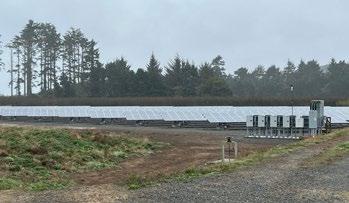
• Attend the swearing-in ceremony of your newly-elected legislators.
• Request a meet-and-greet with your newly-elected legislators.
• Sign up for the eNewsletters of your newly-elected legislators and sign them up for yours.
• Update your CSDA Grassroots Mobilization Survey at csda. net/take-action with any new legislative relationships you have developed.
SDRMA’s Medical Benefits Program offers plan options through Kaiser, Blue Shield and Anthem-Blue Cross, including optional coverage for retirees and public officials. Rates are based on region, not on age.


Our Ancillary Coverages Program offers a wide variety of plan options through Delta Dental, VSP Vision, MHN Employee Assistance Program, Voya Financial Life and AD&D, Short Term Disability and Long Term Disability.

Agencies can pick and choose what programs and plan options they want to participate in. To learn more about SDRMA’s Health Benefits Program, contact us at: healthbenefits@sdrma.org or 800.537.7790.

California CLASS www.californiaclass.com
CSDA Finance Corporation www.csdafinance.net
Special District Risk Management Authority www.sdrma.org
Actuarial Retirement Consulting, LLC www.awenarc.com
Aleshire & Wynder, LLP www.awattorneys.com
AllPaid, Inc dba GovPayNet www.allpaid.com
Brown Armstrong Accountancy Corp. www.bacpas.com
Burke, Williams & Sorensen, LLP www.bwslaw.com
California CAD Solutions, Inc. www.calcad.com
CalTRUST www.caltrust.org
Centrica Business Solutions www.centricabusinesssolutions.com
Chase Bank www.chase.com
Climatec www.climatec.com
Cole Huber, LLP www.colehuber.com
Complete Paperless Solutions www.cps247.com
Atkinson, Andelson, Loya, Ruud & Romo www.aalrr.com
Best Best & Krieger www.bbklaw.com
Five Start Bank www.fivestarbank.com
Cooperative Strategies www.coopstrategies.com
CPS HR Consulting www.cpshr.us
Liebert Cassidy Whitmore www.lcwlegal.com
Richards Watson Gershon www.rwglaw.com
Umpqua Bank www.umpquabank.com
Nigro & Nigro, PC www.nncpas.com
Nossaman, LLP www.nossaman.com
Redistricting Partners www.redistrictingpartners.com
Eide Bailly CPAs www.eidebailly.com
Davis Demographics www.davisdemographics.com Enterprise Automation www.eaintegrator.com
Granicus www.granicus.com
Kosmont Financial Services www.kosmontfinancial.com
Kutak Rock, LLP www.kutakrock.com
Laserfiche www.laserfiche.com
Mann, Urrutia, Nelson CPAs & Associates www.muncpas.com
National Demographics Corporation (NDC) www.ndcresearch.com
NBS www.nbsgov.com
SitelogiQ www.sitelogiq.com
Slovak Baron Empey Murphy & Pinkney LLP www.sbemp.com
Streamline www.getstreamline.com
Townsend Public Affairs www.townsendpa.com
Tripepi Smith www.tripepismith.com
Tyler Technologies, Inc. www.tylertech.com
Vasquez & Company LLP www.vasquez.cpa
Witt O’Brien’s www.wittobriens.com
The CSDA Business Affiliate program is designed to bring businesses and special districts together by creating new relationships and cultivating old ones. Learn more about the opportunities to connect at www.csda.net/connect.

 By Kristin Withrow, CSDA Communications Specialist
By Kristin Withrow, CSDA Communications Specialist
When California passed its landmark climate bill AB 32 in 2006, it set a statewide goal to reduce emissions to 1990 levels by 2020. When that target was achieved in 2016, a more ambitious target of 40% reductions by 2030 was set, followed by an even higher goal to be 100% clean (carbon neutral) by 2045. These targets will require the effort of every sector to modify operations to reduce carbon dependence, conserve energy and modify operations to source renewable energy pathways. Special districts in the state will be phasing in electric fleet vehicles, exploring operational efficiencies to reduce emissions, and looking to grants and program incentives to aide in the affordability of energy transitions.
Such was the case with Turlock Irrigation District (TID) when it came upon a research paper by an alum of nearby University of California at Merced. Focused on environmental engineering, Brandi McKuin’s published paper asserted that California could generate a whopping 13 gigawatts of energy, conserve 63 billion gallons of water and make irrigation and water district maintenance operations more efficient by installing solar panels above their irrigation canals.
TID has been an innovator since its creation in 1887. As the first irrigation district in California, it was founded by innovative thinkers who foresaw the agricultural potential of the land that is now home to over 4700 growers and 150,000 acres of productive land that contributes to the world’s food supply.
Over the years, many have speculated on the possibility of using the airspace over canals to install solar arrays, but none had studied the idea or produced the type of scientifically based calculations in McKuin’s paper.
The research paper has turned into a partnership between Turlock Irrigation District, California’s Department of Water Resources and the organization providing funding for the project, the project developer Solar AquaGrid, and UC Merced. They’ve named it Project Nexus to signify the coming together of water and energy and the collaboration of public, private and academic entities seeking climate adaptation strategies.
TID found themselves in the perfect position to forge partnerships around the idea of proving (or disproving) the paper’s theory. With the state’s declared renewable energy goals, and TID’s dualpurpose role as an irrigation district and a large scale utility provider in a region with 261 days of annual sunshine, they embraced the opportunity to become a research hub to study the efficiency of solar-over-water along two miles of their 250 miles of canals.
“We have 250 miles of canals with electrical infrastructure running along the canals. With land in our area valued at $50,000 an acre, the location of this system above existing canals removes those land costs from the project, “ said Turlock Irrigation District External Affairs Department Manager Josh Weimer. “Having a detailed study of TID’s irrigation system and electric system to see if the scalability makes sense is beneficial to us as we consider future projects.”
With two primary canal types, TID’s existing infrastructure will provide a model for other irrigation districts to follow if the data proves the hypothesized efficiencies are true. Their secondary canals are about 25’ wide, similar to many irrigation districts in the state. Their primary canal is 110’ wide, similar to the Department of Water Resources’ California aqueduct system.
Once data is extracted from the program, TID’s engineering and construction processes can be used to scale the project out to the rest of its lines as well as to other districts.

Beyond carbon-free energy production, Project Nexus will also collect water conservation data as well as study whether the water’s presence will spawn increased solar power generation. The water running under the solar array will provide a cooling effect that allows the panels greater efficiency, shades the surface of the water and shelters it from wind to reduce evaporation. In addition, the reduction of sunlight on the water will result in less vegetation growing in the canals, thus reducing a burdensome maintenance challenge for the district.
The project is the first of its kind in America to pioneer the engineering needed to retrofit existing irrigation canals with a solar array. In this case, the solar panels would be anchored above the canals high enough for unimpeded access to the canals. Some guidelines were established early on by the project’s host: Existing operations of the district could not be impeded, to ensure safety nothing could be installed in the canals, maintenance access had to be preserved, including within the canals and along their banks. The engineering team devised a suspension system to satisfy the district’s restrictions while also reducing the amount of steel construction elements, thus providing lowered materials costs.

“We need to be able to access the canals with specific clearances around the drops and side gates. There’s also a safety component that comes with capping canals that we were not willing to do,” stated Weimer.
Groundbreaking and installation of the 2 miles of test system will begin early next year with certain key components
placed during the irrigation district’s primary maintenance season of October through March, when the canals are not in use.


“Many water agencies have contacted us about the project, most are interested in learning how it’s been engineered, where the challenges have been and how we’ve overcome them. We are tracking all of it and will be able to report back after the system is in place so others can learn from the project,” stated Weimer.

Turlock Irrigation District is keeping an eye on the numbers, specifically the call to action by the California Energy Commission to hit the ambitious carbonneutral, renewable energy goals of the state. TID’s system includes hydropower sources from new Don Pedro Dam and “mini-hydros” in the canal system. “Over the course of the years, we have added natural gas, a geothermal stake, wind, solar, and a biomass requirement. We have a very diverse portfolio of renewable generation and natural gas facilities that provide us the power to meet our load,” said Weimer. By taking steps today to gather project
data to be extrapolated for use by others in the state, TID is carving a path for other special districts to consider as they strive to meet the energy challenges as well. Follow Project Nexus’ status on the Turlock Irrigation District website at TID.org/projectnexus.

The Coalition for Clean Air hosted the 5th Annual California Clean Air Day on October 5, 2022, and districts across the state participated in a multitude of ways. California Special Districts reached out to two districts, Isla Vista Recreation and Park District and Conejo Recreation and Park District, to get details on their Clean Air Day participation.
Isla Vista Recreation and Park District (IVRPD) partnered with the Isla Vista Community Services District (IVCSD) and the University of California at Santa Barbara (UCSB) Environmental Affairs Board (EAB) to host a raffle with prizes from local businesses, gift cards to the Santa Barbara Metropolitan District buslines, free water bottles, bike helmets, a compost starter kit, and even a grand prize electric scooter valued at over $200. IVRPD and its partners encouraged guests to “Clean the California Air” by taking the pledge at www.cleanairday.org in exchange for raffle entry tickets. The event was well-attended with over 50 entries and took place during IVRPD’s Music in the Park Concert Series, co-hosted by UCSB Black Student Union featuring a variety of local artists, bands, and spoken word performances. In total, roughly 160 attended the Clean Air Day event and Music in the Park Concert Series on the Saturday commemorating Clean Air Day.
Native Plantapalooza & Eco Fest on October 1 in Thousand Oaks. Many attendees took the Clean Air Pledge, purchased or won several hundred native plants available at the event and learned about recycling, composting and minimizing waste through the fun recycling games offered. With many exhibitors in attendance, the public was able to attend several presentations on the medicinal values of native plants, pollinators, native plants found in the Santa Monica Mountains that can thrive in home gardens, and backyard beekeeping. The National Wildlife Federation offered updates on the Annenberg Wildlife Crossing and the now infamous P-22 mountain lion.
Conejo Open Space Foundation (COSF) had three main goals for the event, and they achieved each one:
1. Distribute 100 drought tolerant plants
2. Educate at least 300 people about the importance of clean air
3. Introduce at least 50 kids to outdoor stewardship practices
At the Native Plantapalooza & Eco Fest, kids got to blend native plants and artwork for a fun booth experience.

Conejo Recreation and Park District participated in an event hosted by the Conejo Open Space Foundation called
“Our community enjoys a strong network of volunteer-led nonprofit organizations,” said Conejo Recreation and Park District General Manager Jim Friedl. “The Conejo Open Space Foundation has been vocally advocating for protecting and preserving open space for the environmental benefits and recreational trail uses for decades. When COSF stepped up and rallied the community to create a fun, educational and meaningful event, our district was happy to participate.”
IVRPD’s partnership with the IVCSD and EAB provided free educational resources on ways people can reduce their carbon footprint, limit single use plastics, and contribute to the health and wellness of California’s air. IVRPD and its partner organizations reached large audiences due to Isla Vista’s dense population of approximately 27,000 people located in onehalf square mile. Advertising for the Clean Air Day raffle was also cross listed by student groups on campus, such as the UCSB Black Student Union, who were creative partners and organizers in hosting Saturday’s event. Their ongoing summer music series made a perfect venue to add the Clean Air California theme for the weekend. Partnering with the UCSD Black Student Union, they paired the theme “Soul on Wheels” for their concert, which supported the education of alternative transportation in the raffle.
“This event hopes to reach as wide an audience as possible, especially those who are interested in learning about California climate health and supporting local businesses through the use of alternative transportation such as bicycles, skateboards, roller skates, scooters, and walking,” said Isla Vista Recreation and Park District General Manager Kimberly Kiefer.

Friedl said the staff at their district booth was excited at the attendance and is eager to participate again in 2023 adding, “personally, I went home more aware of the actions I can take to have a lighter footprint on our environment and to help clean our air - - - Plus, I got a dozen California droughttolerant plants to help replace my dead lawn!”

Best Best & Krieger LLP serves as go-to legal counsel for special districts. Our team is equipped to advise on the full spectrum of matters and demands, from operations and administration to regulation and governance

The Port of Hueneme of Oxnard Harbor District (The Port), known as the fourth largest container port in California, has been awarded $5 million dollars as part of the Volkswagen (VW) Environmental Mitigation Fund. These funds will be utilized to purchase shoreside power hardware components for the Port’s north terminal and further support the existing south terminal shoreside power system used to cool reefer and container vessels.
Oxnard Harbor Commissioner Board President Mary Anne Rooney said, “We are happy to get this project started as part of The Port of Hueneme’s Environmental Management Framework (EMF), as it will significantly improve regional air quality in an Environmental Protection Agency designated priority location. It will also provide a readily available backup if the south terminal system becomes temporarily unavailable due to construction or other projects.”
The North Terminal Shore Power project provides state of the art electrical infrastructure and electrical-grid-base connection, allowing ocean going vessels to shut down their diesel auxiliary engines while at berth—effectively eliminating vessel diesel emissions while at berth.
The Port of Hueneme will continue to take the necessary steps as a proactive community partner to implement solutions, resolutions, and technologies to ensure the health and viability of our local economies and surrounding communities.
On average, 210 vessels per year are expected to use the shore power facility annually, resulting in a 94 percent reduction in particulate matter and a 99 percent reduction in nitrogen oxides over the lifetime of the entire shore power infrastructure project. The diesel emissions eliminated from vessels while at berth and the overall emission reductions generated by this project will improve the local air quality and continue the Port’s strategic long-term vision to modernize its facilities, improve the efficiency of goods movement, reduce its carbon footprint, and bolster resilience at The Port of Hueneme.
“The new north terminal shoreside power system will drastically reduce emissions and provide grid-based electrical connection redundancy to different classes of ocean-going vessels,” said KJ May, Port of Hueneme Engineering Manager.

These improvements will effectively eliminate the noise and emissions from auxiliary engines and simultaneously improve the working conditions and increase the quality of life for neighboring communities, shippers, truckers, terminal operators, and dock workers alike.

Upgrading the Port of Hueneme’s infrastructure significantly reduces the emissions generated by goods movement and will produce long-term benefits throughout our regional and national transportation systems.
Vehicles being driven off a “Roll On/Roll Off” vessel. After the North Terminal Shore Power project is completed, the vessel will be able to plug in while these operations are happening.
This investment is part of our legacy of environmental stewardship at the Port” said Kristin Decas, Port of Hueneme CEO and Port Director. “California requires Ro-Ro (roll-on/ roll-off) vessels to plug in while at berth by 2025; beating this goal keeps us competitive in the global market and further eliminates emissions from our day-to-day operations.”
The Port of Hueneme is aiming to get the North Terminal Shore Power System operational within calendar year 2024. Once completed, the Port will maintain contracts to keep the shoreside power electrification equipment in operable condition for the life of the equipment—which is expected to be at least 20 years.

The Port of Hueneme of Oxnard Harbor District is one of the most productive and efficient commercial trade gateways for niche cargo on the West Coast. The Port is governed by five locally elected Port Commissioners. The Port consistently ranks among the top ten U.S. ports for automobiles and fresh produce. Port operations support the community by bringing $2.2 billion in economic activity and creating 20,032 traderelated jobs. Trade through the Port of Hueneme generates more than $173.2 million in direct and related state and local taxes, which fund vital community services. In 2017, the Port
of Hueneme became the first port in California to become Green Marine certified and was voted the Greenest Port in the U.S. at the Green Shipping Summit.
Image depicts the project location and the proximity of it to the surrounding area.
AllPaid (formerly GovPayNet) is honored to be selected as CSDA’s Endorsed Affiliate for Payment Services/Merchant Services. AllPaid’s payment platform provides CSDA and its members a secure industry leading payment solution with exceptional customer service and support. These services are available at below market, pre-negotiated rates, exclusively for CSDA members.
PCI Level 1 Security Robust Reporting
Multiple Payment Options: Onsite, Online, By Phone 24/7/365 Call Center
Guaranteed Payments - No Charge Backs for CSDA Members No Cost to CSDA Members
For more informtion please contact AllPaid at E: csda@allpaid.com P: 317-713-6591

In Shurtleff et al. v. City of Boston (May 2, 2022), the U.S. Supreme Court unanimously held that the City of Boston’s refusal to let an organization fly their flag on city-owned flag poles based on their religious viewpoint violated the Free Speech Clause of the First Amendment. In Shurtleff, an organization brought action against Boston alleging the city violated, among other things, the First Amendment’s Free Speech Clause by refusing to allow the organization to raise its self-described “Christian flag” under the city’s program of allowing private groups to use one of the three flag poles on the plaza in front of city hall to fly the flag of their choosing for the duration of events sponsored by the groups. The First Circuit Court of Appeals disagreed and ruled in favor of Boston.
However, the U.S. Supreme Court reversed and concluded that Boston’s flag-raising program does not express government speech. Expressing government speech would have allowed Boston to refuse a flag based on viewpoint. Instead, the Supreme Court concluded that the program expressed private speech when it allowed private organizations to use the flagpole. Thus, Boston was therefore prohibited from restricting speech based on a speaker’s viewpoint. In making
this determination, the Supreme Court concluded that “the city’s lack of meaningful involvement in the selection of flags or the crafting of their messages leads us to classify the flag raisings as private, not government, speech - though nothing prevents Boston from changing its policies going forward.”
If your city has a policy allowing private organizations to raise their flags on city-owned flag poles, or any other policy allowing private organizations to display a flag or other similar object on public property, then we recommend considering whether the policy should be reexamined in light of this case.
the city’s lack of meaningful involvement in the selection of flags or the crafting of their messages leads us to classify the flag raisings as private, not government, speechthough nothing prevents Boston from changing its policies going forward.
Aleshire & Wynder LLP provides unparalleled legal representation to local communities throughout California. Our attorneys have been loyally serving public agencies for over 35 years.
This communication is not intended to be, and does not constitute, legal advice, and no attorney-client relationship is formed by reading it. Seek the advice of an attorney before acting or relying upon any information in this communication. Facts specific to your situation or future developments may affect subjects contained herein. This communication may be considered ATTORNEY ADVERTISING in some states.

While energy and infrastructure upgrades reduce overhead costs, limited budgets and conflicting priorities can restrict spending that doesn’t immediately impact frontline services. Centrica Business Solutions deploys flexible contracting options that enable special districts to maintain budget neutrality while implementing needed upgrades.
Requires no initial investment
Uses the energy savings achieved by the infrastructure improvements to finance the cost of upgrades
Contact: Dan Mitchell
Email: dan.mitchell@centrica.com Phone: 949-842-6150
centricabusinesssolutions.com

attention, with some significant deficiencies in conditions and functionality, increasing vulnerability to risk. As of 2019, estimated deferred maintenance across the U.S. exceeds $1 trillion.

Let’s look at a few examples where investment is needed on a local level.
By Centrica Business SolutionsSpecial districts across the country are showing their age and require maintenance and repair; however, there are not enough resources in the budget to complete the necessary work. More often than not, the project goes into a maintenance backlog known as ‘deferred maintenance’ or ‘deferred maintenance and repairs.’
Due to shrinking and tight budgets, facility managers across all areas of special districts face the daunting task of managing a growing deferred maintenance backlog. Aging facilities require renovations and retrofits – lighting, HVAC, plumbing, electrical, and building envelope improvements like windows and roofing – to bring them to like-new condition, ensure compliance with various building codes, increase asset performance, and extend equipment lifespan.
Deferred maintenance is a local, state, and federal challenge. According to the American Society of Civil Engineers, America’s 2021 infrastructure scorecard is a C-. This score indicates that infrastructure – from parks to schools to drinking water systems – is deteriorating and requires
Public parks are vital to building healthy communities and ensuring economic prosperity. They deliver value by making life better for communities and offering a wealth of recreational activities, from learning centers to events to retreats. However, investment is lagging in infrastructure upgrades; as a result, facilities, drinking water systems, and other critical assets are deteriorating. State parks, for instance, face a $5.6 billion deferred maintenance backlog. The situation is even more urgent for local parks, which face a $60 billion backlog.
Water and wastewater facilities are critical components that ensure the community’s well-being, delivering safe drinking water and treating wastewater to protect the community’s and environment’s health. This infrastructure is also a revenue generator – however, aging water infrastructure leads to an estimated 6 billion gallons of treated water lost each day, a waste of natural resources, and a loss of revenue, which special districts can reclaim through infrastructure improvements.
Addressing deferred maintenance and implementing energy and infrastructure upgrades are appealing because aging infrastructure and assets are inefficient, costly, and timeconsuming to maintain. Reducing overhead costs is critical for special districts, as they face increasing pressure to maximize taxpayer dollars and accomplish more with less. Still,
Discover five reasons why special districts need to prioritize infrastructure upgrades to reduce overhead costs and carbon emissions, maximize taxpayer dollars, and ensure safe, healthy communities.
competing priorities usually mean that addressing outdated infrastructure takes a backseat in favor of funding communityfocused services and initiatives.
It’s easy for special districts to push spending on facility improvements to the bottom of the priority list when this portion of the budget is competing against public-facing budget items that focus on bettering their community. After all, they have a fiscal and social responsibility to ensure the well-being of their constituents and build a thriving community.
However, deferring maintenance on back-end, yet critical, assets only puts infrastructure and the community at risk, as it can divert funding from where it’s most needed. For example, when energy costs are high or emergency maintenance on outdated equipment is necessary, it forces budget trade-offs that shift resources. The challenge is to reduce spending without negatively impacting the services provided to the community. Therefore, delaying infrastructure upgrades cannot last forever, and addressing deferred maintenance is becoming more urgent to ensure the sustainability of infrastructure.
Here are five reasons why you should take a hard look –right now – at tackling the growing backlog.
With budgets tight, special districts need to take a hard look at reducing operational costs and operating more efficiently to maximize taxpayer dollars. Aging infrastructure requires more resources to operate. When buildings are not using energy efficiently, it has financial impacts, diverting budget away from the community. According to the U.S. Environmental Protection Agency, the average local government facility wastes about 30% of the energy it uses. And some, like water and wastewater plants, are massive energy consumers, dedicating 40% of their operating costs to energy.
Modernizing infrastructure and operating more efficiently enables the budget to focus on serving and bettering the community, maximize taxpayer dollars, and build a thriving, healthy, safe community. Capturing energy cost savings from more efficient energy usage can directly translate into enhancements the community cares about – things that make life better, like new playgrounds, recreational facilities, community events, and more.
Inefficient energy usage doesn’t simply affect the operational budget – high energy consumption and energy waste carry the additional price tag of carbon emissions. And this matters because the community’s attitude toward the
climate is changing. In addition, the federal government has set clear net zero goals.
Special districts need to take a hard look at their infrastructure to boost the sustainability of their facilities and reduce carbon emissions. Upgrading energy technology is critical to meeting electrification and carbon targets while conserving natural resources. From energy upgrades that reduce consumption to installing renewable technologies that generate clean power on-site to offset grid energy consumption, the options for boosting the efficiency and sustainability of facilities are endless.
Many special districts are already taking steps to mitigate their carbon emissions to reduce operational costs. They are developing sustainability and energy roadmaps, disclosing carbon emissions, and receiving public recognition.
Reason 3. Aging infrastructure is risky and costly to maintain
While convenient, delaying infrastructure upgrades can lead to more problems down the road. Outdated equipment isn’t simply less energy efficient – as equipment reaches the end of its lifespan, more frequent and expensive emergency repairs may be necessary. In short, deferring maintenance can cost more in the long run – according to research by Rick Biedenweg, President of Pacific Partners Consulting Group and former Assistant Vice President of Information Resources at Stanford University, “each $1 in deferred maintenance costs $4 of capital renewal needs in the future.”
For example, postponing upgrades to aging HVAC systems or water and wastewater infrastructure is tempting. After all, while they are workhorse assets, they aren’t as appealing as a new community center. But what if these critical assets fail unexpectedly?
Reactive maintenance usually comes with a price tag that may be overlooked in the budget – which may divert funding away from serving the community to pay for costly emergency repairs.
Delaying upgrades can also carry safety risks. Facility managers are held accountable for providing safe environments for all building occupants. For example, infrastructure upgrades like modern HVAC and lighting systems increase the efficiency of facilities, ultimately costing less for energy and maintenance. These upgrades also create an optimal living, learning, and working environment by ensuring proper ventilation, indoor air quality, and lighting. In the case of water facilities, there can be no compromise on quality standards, and they must provide reliable service and meet regulatory and environmental demands at all times –upgrades address resilience needs and costly water loss.
Not to mention, constantly battling failure after failure with outdated energy infrastructure is not the best use of a facility manager’s time and budget. Operating in a reactive mode is stressful and time-consuming.
Constituents want to see demonstrated value with their money. They also don’t like to see tax increases, so it’s essential to maximize tax dollars for improvements that are important to the community. These could include cutting-edge buildings, curb appeal, recreational activities, economic prosperity, high property values, environmental commitment, and ensuring safety through fire stations and other emergency services.
Unaddressed infrastructure upgrades can be frustrating on many levels – regarding outdated assets’ visual appearance plus issues that directly impact safety and comfort – like HVAC system failures, uncomfortable lighting, and even loss of power during power outages. Reactive maintenance is a vicious cycle of postponing and emergency fixing. Making infrastructure upgrades now frees up time and budget so you can prioritize serving the community.
Addressing a deferred maintenance backlog and moving energy infrastructure upgrades up the priorities list has short and long-term financial benefits, helping achieve economic and environmental goals and satisfying the demands of stakeholders. Upgrading aging energy assets and implementing cutting-edge integrated energy solutions can simultaneously deliver financial and decarbonization results, enabling you to unlock opportunities to monetize energy infrastructure and reduce overhead costs.
While reaching energy infrastructure and carbon reduction goals is easy to say, it can be hard to do. To get there, complex technical challenges and competing budget priorities may need to be overcome. It can be daunting – where to start, and how to fund necessary upgrades without diverting precious capital away from critical services will be questions that require answers.
The good news is that lack of capital is not a barrier to accessing these opportunities. A variety of financing mechanisms are available to fund the infrastructure improvements needed to reduce energy costs quickly, reduce carbon emissions, and even reclaim revenue from

energy infrastructure – without taking on additional debt. In particular, an Energy Performance Contract, or EPC, is a great option to leverage, as it helps special districts maintain budget neutrality and overcome capital constraints while implementing needed upgrades. This financing method requires no initial investment, and it uses the energy savings achieved by the infrastructure upgrades to finance the cost of the upgrades.
Successful energy and infrastructure upgrades need to achieve the right balance between three priorities: Cost efficiency, energy resilience, and carbon reduction. Working with the right partner is essential to ensure implementation of successful infrastructure upgrades while remaining aligned to strategic and financial goals. Centrica Business Solutions is a DOE-qualified and NAESCO-accredited energy services company that works with all areas of special districts to integrate sustainable energy solutions and remove complexity. We deliver a full range of bundled end-to-end energy solutions and services that optimize energy and infrastructure comprehensively – for maximum energy savings and carbon reduction.
According to a National Recreation and Park Association (NRPA) poll, most Americans believe dog parks provide valuable benefits to the communities they serve. Dog parks provide a space for dogs to exercise and socialize, while also allowing owners to engage with their pets and connect with other dog owners.
Is your district considering building a community dog park? If so, read on for valuable development and risk management considerations.
We recommend first consulting with your county and/or local government(s) to determine if there are specific requirements regarding park locations, structural requirements, signage, noise, sanitation, maintenance, and other factors.
If you are considering building a dog park within an already existing park, consider the other amenities in the park and plan to provide adequate space from playgrounds, skateparks, and other structures. Avoid building the park immediately adjacent to residential property lines. The park should be easily accessible and remember to consider relevant ADA access requirements.
The basic components of a dog park include fencing around the park and an entrance area. Fencing five feet or higher is recommended to prevent dogs from jumping over. Ideally, the entrance should be a buffer to the park, such as a double-gated entry area which provides an off-leash area and an assimilation

area for the dogs. In addition, consider separate areas for large dogs and smaller, younger, or older dogs.
Based on our research, natural turf/grass is one of the least desired surfaces for dog parks. A study conducted by Fairfax County outlines the pros and cons of the following dog park surfacing materials:
• Natural Turf/Grass – Is soft and clean but wears quickly with high maintenance requirements.
• Crusher Fines (a finely-crushed stone mix) – Drains well and holds up to heavy use but can erode if not on level surface.
• Wood Mulch – Easy to replace but holds dog waste and has poor drainage.
• Synthetic Turf – Less maintenance but requires frequent cleaning and may require replacing every couple of years, depending on use.
Develop a set of rules and regulations. Signage should include the rules as well as emergency and district contact information. The sign should be posted on the park gate near the entrance.
Common signage rules include, but are not limited to:
• Dog park hours
• Use dog park at your own risk.
• Users are legally responsible for their dogs and any injuries and/or damages caused by their dogs.*
• Dogs must be legally licensed and vaccinated.
• Dogs must be leashed when entering and exiting the park.
• Aggressive dogs must be removed immediately.
• Owners must be in the dog park and supervising their dog with leash readily available.
• Handlers must be at least 16 years of age.
• Children under 13 must be accompanied by an adult and supervised at all times.
• Puppies under four months are not allowed.
• Dogs in heat are not allowed.
• No human and/or dog food is allowed in the dog park.
• Smoking is not allowed in the dog park.
• Petting other people’s dogs without the owner’s permission is not allowed.
• Users are legally responsible for their dogs and any injuries and/or damages caused by their dogs.*
• If dog park users do not abide by these rules, please contact local animal control at (INSERT PHONE NUMBER).
• In an emergency call 911.
MIKE SCHEAFER, PRESIDENT Costa Mesa Sanitary District
SANDY SEIFERT-RAFFELSON, VICE PRESIDENT, Herlong Public Utility District
ROBERT SWAN, SECRETARY, Groveland Community Services District
Members of the Board
DAVID ARANDA, CSDM, Stallion Springs Community Services District
TIM UNRUH, CSDM, Kern County Mosquito & Vector Control District
JESSE CLAYPOOL, Honey Lake Valley Resource Conservation District
THOMAS WRIGHT, Clovis Veterans Memorial District Consultants
JAMES MARTA, CPA, James Marta & Company, LLP
LAUREN BRANT, Public Financial Management
DEREK BURKHALTER, Bickmore Actuarial
CHARICE HUNTLEY, River City Bank
FRANK ONO, ifish Group, Inc.
ANN SIPRELLE, Best Best & Krieger, LLP
KARL SNEARER, Apex Insurance Agency
DOUG WOZNIAK, Alliant Insurance Services, Inc.
* California Government Code 831.7.5 addresses the actions of a dog in a dog park. It states, “A public entity that owns or operates a dog park shall not be held liable for injury or death of a person or pet resulting solely from the actions of a dog in the dog park”.
California Civil Code 3342 addresses the dog owner’s strict liability when their dog bites a person. It states, “The owner of any dog is liable for the damages suffered by any person who is bitten by the dog while in a public place or lawfully in a private place.”
Seating options, a drinking water source, and shade structures or trees are recommended. An available running water supply for dogs is also recommended. In addition, trash receptacles, waste bag dispensers, and waste bags facilitate the disposal of dog waste or general trash.
Maintenance should include frequent collection and removal of debris, restocking waste disposal bags, sign repair, filling holes, fence repair, irrigation, and surface material maintenance.
LAURA S. GILL, ARM, ARM-P, CSDM, Chief Executive Officer
ELLEN DOUGHTY, ARM, Chief Member Services Officer
DEBBIE YOKOTA, AIC, ARM, Chief Risk Officer
WENDY TUCKER, AU, Claims Manager
ALANA LITTLE, Health Benefits Manager
HENRI CASTRO, CSP, Risk Control Manager
DANNY PENA, Senior Claims Examiner
ERIC LUCERO, Senior Risk Control Specialist
TERESA GUILLEN, Member Services Specialist II
MARGARITO CRUZ, Accountant
HEIDI SINGER, Accountant
MICHELLE BROWN, Health Benefits Specialist II
CANDICE RICHARDSON, Member Services Specialist I
KEITH IKAMI, Claim Examiner I
Special District Risk Management Authority 1112 I Street, Suite 300, Sacramento, CA 95814 tel: 800.537.7790 • www.sdrma.org
For nearly 40 years, The Ocean Conservancy has sponsored International Coastal Cleanup Day (ICC), a volunteer effort to clean up marine environments around the world. With more than 100 countries participating, volunteers descend on beaches, rivers, lakes, and waterways to show their commitment to clean, healthy marine environments.
Since its inception, International Coastal Cleanup has extended far beyond just one day, with volunteers expanding their cleanup efforts to the entire month of September and beyond.
Much of cleanup effort is focused on removing litter, but volunteers also tackle projects that support healthy ecosystems, providing opportunities for volunteers to become environmentalists, even if just for a short time. Resource Conservation District of the Santa Monica Mountains used ICC as a platform to promote its Invasive Crayfish Removal Event.
as still as possible, waiting for unsuspecting crayfish to creep out from their underwater hiding spots, typically tucked under rocky crevices within the creek. Crayfish are scooped up in nets and placed in bright orange buckets flanking the banks of the creek, after which volunteers gather as a group to measure and sex them so the numbers can be reported to California State Parks.
Removing these invasive pests benefits endangered southern steelhead trout, whose eggs are preyed upon by the crayfish. The trout are an indicator species in the region, meaning their presence gives insight as to the health of a given creek. Topanga is one of the last creeks within the Santa Monica Mountains to house steelhead, and the crayfish is the only known invasive aquatic animal in this body of water.
Ensuring the trout remain in Topanga Creek means a healthier watershed for our community … the benefits trickle to oak woodlands, chaparral, native birds, local mammals, and even the quality of the air we breathe.
Jelly Kahler, Education and Communications Specialist“We’ve been conducting invasive crayfish removals in Topanga Creek since 2013. We host several volunteer opportunities at our Resource Conservation District, but crayfish removals always seem to attract the most community volunteers,” said Jelly Kahler, the education and communications specialist for the district.
During the event, volunteers wade in knee- to thigh-high deep water, armed with small pieces of hot dog tied to the end of a string in one hand and a net in the other. Volunteers stand
“Ensuring the trout remain in Topanga Creek means a healthier watershed for our community … the benefits trickle to oak woodlands, chaparral, native birds, local mammals, and even the quality of the air we breathe,” Kahler continued.

Topanga Creek also connects to the ocean where the Topanga Lagoon breaches, so removing invasive species from the creek prevents them from spreading to other watersheds.
International Cleanup Day provides an ideal opportunity to marry volunteer efforts with the longstanding research of the Resource Conservation District. The district has been
monitoring the southern steelhead since 1995, and in fact, its senior biologist, Rosi Dagit, has dedicated her career to bolstering this threatened population to historic numbers. Preserving the local population would be invaluable to the species at large.

“We love involving our community in this important restoration work because we believe conservation of natural resources should be approached from a community and grassroots perspective. Inspiring community members to become environmental stewards and connecting them with the nature that exists all around is at the heart of our mission at the Resource Conservation District,” concluded Kahler.

Many states and local governments across the country offer Local Government Investment Pools (LGIPs) for the exclusive benefit of governmental entities within their state or jurisdiction. California CLASS is just one such example of a LGIP, which in California, is commonly referred to as a Joint Powers Authority investment pool.
LGIPs and the governmental or private entities that manage them report the values of their securities based on pronouncements issued by the Governmental Accounting Standards Board (GASB). Its mission is “to establish and improve standards of state and local governmental accounting and financial reporting that will result in useful information for users of financial reports and educate stakeholders on how to most effectively understand and implement those standards.”
Some LGIPs have historically been managed as “2a7-like pools” to comply with GASB Statement No. 31 as amended by GASB Statement No. 59 and have elected to measure for financial reporting purposes all investments at amortized cost.

This method of accounting assumes the value of the underlying securities of the LGIP is the amount paid (cost) for the investments, which may include a discount or premium to the face amount of the security. Any discount or premium is recorded (accreted or amortized) as an adjustment over the life of the security, such that amortized cost equals the principal value at maturity. Discount bonds are typically accreted using a straight-line method, whereby the increase is evenly spread throughout the term life of the bond. For purposes of calculating earnings to each participant, all investments are valued at amortized cost.
In December 2015 the GASB issued Statement No. 79, Certain External Investment Pools and Pool Participants. The Statement is a response to the Securities and Exchange Commission’s 2014 amendments to Rule 2a-7. GASB Statement No. 79 establishes specific criteria to determine whether a qualifying external investment pool may elect to use an amortized cost exception to fair value measurement. The Statement provides management standards for LGIPs electing to report and measure LGIP investments at amortized cost and no longer references SEC Rule 2a-7 by eliminating the language “2a-7 like”. To qualify for the exception to measure all of its investments at amortized cost for financial reporting purposes, a LGIP must meet the criteria for portfolio maturity, portfolio quality, portfolio diversification, portfolio liquidity and shadow pricing (at a minimum monthly), in addition to transacting at a stable net asset value (NAV) per share. Significant noncompliance prevents the LGIP from utilizing the amortized cost exception.
An external pool that reports its holdings at its fiscal year end at amortized cost does not take into consideration any market related changes to the underlying securities. As stated in Paragraph B6 of GASB Statement No. 79, “In the Board’s view, the overall goal of the specific criteria presented in the Statement should be to limit the risk that external investment pool investments measured at amortized cost significantly deviate from fair value.” However, if a LGIP has a long weighted average maturity (WAM) and rates have risen dramatically, or a credit crisis negatively impacts the credit exposure in the LGIP, this may not be depicted in a pool that has elected to report under the exception of amortized cost.
The GASB in Statement No. 79, Paragraph B3 states “Consistent with Statement 72, the Board believes that measuring investments at fair value generally is preferable. Fair value provides consistency and comparability between governments. However, Statement 72 allows an exception to fair value measurement for 2a-7 like external investment pools because the amortized cost of investments held by 2a-7 like external investment pools will closely approximate fair value.” They reiterate their preference for fair value throughout Statement No. 79. Specifically, again in Paragraph B7 they state “However, the Board has expressed its general preference for measuring investments at fair value and intends for this exception (amortized cost) to apply only in narrow circumstances. The specific requirements in this Statement make those narrow circumstances clear.” Fair value measurement enhances and strengthens the transparency of financial information provided to the public.
California CLASS Prime transacts its Participants’ shares at a stable NAV of $1.00. It measures and reports investments


at fair value because this provides a transparent and accurate picture of the value of a LGIP’s holdings based on current market conditions.


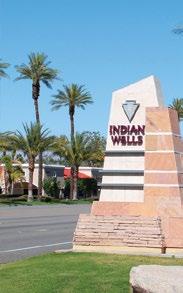
Like so many MMFs, a LGIP may choose to obtain a rating from a nationally recognized statistical rating organization (NRSRO). California CLASS Prime is AAAm rated by Standard & Poor’s (S&P) under their principal stability fund rating methodology. According to S&P, a Principal Stability Fund Rating (PSFR), “commonly referred to as a money market fund rating, is a forward-looking opinion about a fixed income fund's ability to maintain principal value (i.e., stable NAV).” As a rated LGIP, the holdings must be submitted weekly to S&P to ensure the LGIP is adhering to the criteria for a AAAm rated fund. A marked-to-market NAV is calculated and submitted each week. This weekly review guarantees the marked-tomarket NAV has not deviated substantially from a NAV that was calculated using amortized cost. A weekly marked-tomarket NAV provides assurance the LGIP can operate at a $1 NAV and redemptions from the pool are not detrimental to remaining participants.

In conclusion, as the GASB states throughout Statement No. 79, the preference is to measure investments at fair value because the use of amortized cost is intended to be an exception in narrow circumstances. We believe measuring and reporting the investments of a LGIP at fair value gives an accurate and timely depiction of the investments and provides transparency to the participants. By measuring investments at fair value and in managing the Prime Fund in accordance with S&P’s AAAm guidelines, California CLASS and other stable
$1.00 NAV LGIPs managed by Public Trust Advisors pursue the primary objectives of offering Participants maximum safety, daily liquidity, and optimized returns.

Any financial and/or investment decision should be made only after considerable research, consideration, and involvement with an experienced professional engaged for the specific purpose. The information presented should not be used in making any investment decisions. This material is not a recommendation to buy, sell, implement, or change any securities or investment strategy, function, or process. Past performance is not an indication of future performance. Any financial and/or investment decision may incur losses.
JO MACKENZIE, PRESIDENT, Vista Irrigation District
VINCE FERRANTE, VICE PRESIDENT, Moss Landing Harbor District
ARLENE SCHAFER, SECRETARY, Costa Mesa Sanitary District
GLENN LAZOF, TREASURER, Regional Government Services Authority
GEORGE EMERSON, Goleta Sanitary District PAUL HUGHES, CSDM, South Tahoe Public Utilities District
MATTHEW MCCUE, Coachella Valley Cemetery District Consultants
RICK BRANDIS, Brandis Tallman, a Division of Oppenheimer & Co. Inc.
WILLIAM MORTON, Municipal Finance Corporation ALBERT REYES, Kutak Rock LLP
NICOLE TALLMAN, Brandis Tallman, a Division of Oppenheimer & Co. Inc.
NEIL MCCORMICK, Chief Executive Officer
CATHRINE LEMAIRE, Coordinator
AMBER PHELEN, Executive Assistant
RICK WOOD, Finance & Administrative Director
CSDA Finance Corporation 1112 I Street, Suite 200, Sacramento, CA 95814 tel: 877.924.2732 www.csdafinance.net












When your team and ours all pull together, you get the sure-footed stability you need to proceed with confidence. As an extension of your staff, we are always at the sidelines delivering service and expertise. For everything from Workers’ Compensation and Property/Liability coverages to Health Benefits options available throughout California, we are here to keep you going strong. For more information, visit sdrma.org.

1112 I Street, Suite 200 Sacramento, CA 95814
